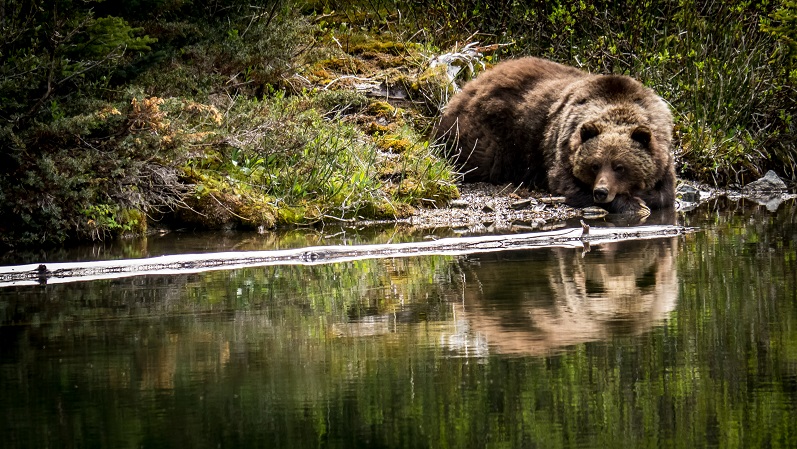Ongoing Stewardship Efforts
BCTMO Conservation Club has acquired extensive knowledge of the wildlife and habitat within our territory as an outcome of our hunting activity. We understand the value of this information, which is why we invest our knowledge, time and energy in many conservation projects. Here are a few examples of our ongoing efforts:

Wildlife DNA collection program
The Wildlife DNA collection program, sponsored by the Guide Outfitters Association of British Columbia, is a comprehensive study designed to track the health and size of wildlife populations in British Columbia. On every hunt trip, we collect wildlife DNA samples to contribute to GOABC's DNA database. Through our active contribution to this program, BCTMO Conservation Club helps ensure that all of British Columbia continues to focus on sustainable, responsible resource management.
Grizzly bear research
As we travel through the backcountry, we collect grizzly bear hair samples from their territory marker rub trees. Through DNA analysis of these samples, scientists can determine important data like the bears' movement, maps of their home ranges, and population trends. The data from this research allows biologists to make conscientious resource management decisions that will promote the health of our grizzly bear population.
Mountain goat population studies
The Bridge River Watershed has one of the healthiest mountain goat populations in British Columbia, thanks in large part to our solid working relationships with wildlife biologists. Through our combined efforts, we complete annual mountain goat population surveys. This allows us to track population statistics and identify home ranges of family units. As we monitor the impact of activities in the territory, we act on this information to protect the habitat of our mountain goat population.
California Bighorn sheep studies
There are approximately 1300 California Bighorn sheep in the Lillooet Timber Supply Area. The limiting factor to the survival of this species is the availability of prime wintering and lambing ranges, which are usually in shorter supply than summer ranges. We are currently promoting two studies that aim to ensure quality habitat for this species: coordination of the actions and management of 2 different regions to get accurate population numbers for each group, of rams, ewes and lambs, as well as yearly lamb survival, migration patterns, winter ranges, summer ranges and predator impact; and enhancement of California Bighorn Sheep habitat by limiting motorized vehicle access to alpine areas.
South Chilcotin Mountains Provincial Park
The South Chilcotin region was approved as a park in 2004 and BCTMO Conservation Club played a significant part in the process. We established the ground work for this area to be considered for Park status, and led the process in writing the first 20-page draft for the Park Management Plan in 2012. The area became a provincial park in 2016.
Motor vehicle restrictions
We supported the regulations for motor vehicle closure in alpine and sub-alpine areas (all areas above 1500-metre elevation) for two mountain ranges in the Chilcotin Ark, which were achieved. Extensive motorized recreation has led to mountain goat and California Bighorn sheep displacement in over one-third of their summer range on these mountain ranges. We also support the plan to limit motorized vehicles in low country areas that will have environmental damage, wildlife displacement, user conflicts or safety issues.
5% of every hunt goes towards
conservation initiatives in the Chilcotin Ark

STAY UPDATED